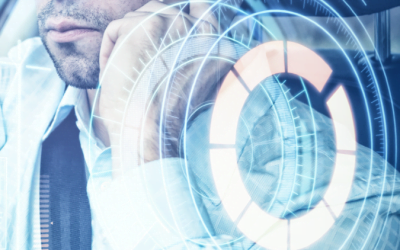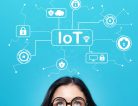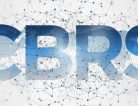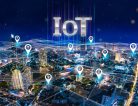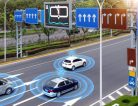IoT medical devices transforming healthcare by changing every aspect of our social and professional lives as billions of pervasive devices enable the acquisition of timely and accurate information about our personal context, the data gathering transforms what doctors can do with actionable knowledge.
The healthcare sector provides an excellent example of the way in which the future billions of IoT devices will introduce disruptive transformation and new paradigms. In an era where population is aging and incidents of chronic diseases are proliferating, healthcare solution providers are increasingly looking into internet connected devices for remote monitoring of elderly and patients’ conditions.
This remote monitoring facilitates preemptive medical interventions, while at the same time increasing the patients’ independence, reducing hospitalization needs and alleviating pressures on the healthcare system. One of the most prominent classes of IoT Medical Devices transforming healthcare today is wearable devices, which are personalized and provide rich and real-time information about an individual’s healthcare related context, such as heart rates, activity patterns, blood pressure or adherence to medication schedules.
Wearable devices play an instrumental role in monitoring patients’ diseases and recovery state, as well as adherence to prescribed practices and medication. A large number of relevant wearable devices are already available in the market such as activity trackers, smartwatches (e.g., Apple or Garmin Watches), pedometers, sleep apnea detector and smart pills (e.g., AdhereTech’s smart wireless pill bottle).
Implant IoT Medical Devices Transforming Healthcare
A less widely known class of wearable IoT medical devices transforming healthcare are implant devices, i.e. devices that are placed inside or on the surface of the human body. The concept of such devices has been around for several years prior to the rise of the IoT paradigm, as prosthetics that were destined to replace missing body parts or even to provide support to organs and tissues.
Therefore, implants were typically made from skin, bone and other body tissues, or from materials (e.g., metal, plastic or ceramic materials). While the distinguishing line between conventional IoT medical devices and wearable / implant devices can sometimes be blurred, we consider as implant medical devices those attached to the skin or placed inside the human body, instead of devices simply worn by the patient.
Impressive examples of implant devices are: (i) Brain implant devices (i.e. electrodes along with a battery empowered devices) used to manipulate the brain and alleviate chronic pain, depression or even schizophrenia; (ii) Electronic chips implanted at the back of the retina in the eye, in order to help sight restoration.
With the advent of IoT medical devices transforming healthcare, implant devices can also become connected and deliver information to cloud computing infrastructures and other applications. In this way, they can become part of the IoT infrastructure and enable the transmission of medical data from the patient to the practitioner on a regular basis. Moreover, with IoT implants patients no longer need to visit their doctor in order download data from their device or even in order to configure the operation of the implant device.
For example, by enhancing devices such as the electronic chip for vision restoration (outlined above) with a small handheld wireless power supply, one can adjust the sensitivity, contrast and frequency as needed in order to yield optimal performance of the device for different environmental settings (e.g., lighting conditions).
Risks with IoT Medical Devices Transforming Healthcare
Despite their benefits, the adoption of implant IoT medical devices is still in its infancy. One of the main reasons is that the development and deployment of implants is associated with several challenges and risks. In particular, implants are associated with surgical risks concerning their placement and removal processes. Although generally safe, these processes could lead to infections or even implant failures, which makes patients reluctant to adopt them. Moreover, several patients have reported allergies and reactions to the materials comprising the implant devices.
Beyond these adoption challenges, there are also IoT technological challenges associated with the need to understand and optimize the placement and operation of the device. For example, there is a need to optimize radio communications between the implanted device and the receiving devices where the information of the implant is destined. In this respect, low power operation is very important as a result of the need to economize on power capacity, while at the same time complying with applicable laws and regulations, including security and safety regulations.
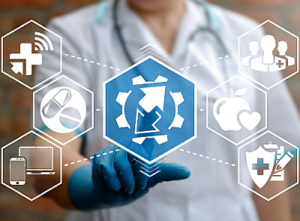 From a technology viewpoint, implant solutions have to resolve trade-offs associated with efficiency and accuracy against antenna size, power use, operating bandwidth and materials costs. Moreover, implant devices should be appropriate for various body and skin morphologies, while at the same time offering security and data protection features that render them immune to malicious parties that may attempt to compromise their operation.
From a technology viewpoint, implant solutions have to resolve trade-offs associated with efficiency and accuracy against antenna size, power use, operating bandwidth and materials costs. Moreover, implant devices should be appropriate for various body and skin morphologies, while at the same time offering security and data protection features that render them immune to malicious parties that may attempt to compromise their operation.
The above-listed factors render the design of cost-effective implants that adhere to regulations and optimize their operation very challenging. In order to alleviate these challenges, vendors and integrators of IoT implants resort to simulation. Simulation is an ideal tool for modelling the operation of the device and understanding its communication with the body and other devices of the surrounding environment such as gateways or even other implant devices.
Furthermore, vendors are implementing services that aim at increasing the operational efficiency of the devices, such as preventive or predictive maintenance of the device, as well as remote diagnostics and software upgrades (e.g., remote patching). The last batch of challenges concerns the important business issues with IoT medical devices transforming healthcare, especially implants, which are not confined to selling devices.
Rather, it is about innovating digitally and offering a whole range of services as part of the device’s industry ecosystem. Specifically, vendors and integrators of IoT implants need to find novel ways and business models for sharing their data with healthcare services providers and other stakeholders, while at the same time creating new value chains in collaboration with other device vendors, health professionals, home care services providers and other business actors.
The evolution of IoT medical devices transforming healthcare with implants will gradually signal a shift from the offering of an optimal IoT device to the offering of a pool of optimized and personalized healthcare services that will be built by the device’s industry ecosystem. Implant IoT medical devices are here and expected to play a significant role in the on-going IoT-driven transformation of the healthcare landscape. Stay tuned!.
